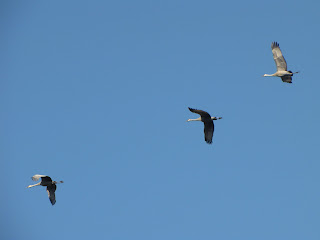When I got to Mexico City I expected the place to be reminiscent of Camus' "The Plague," or Saramago's essay on blindness, but the panic had largely ebbed by then, and all that could be seen was about a quarter of the people wearing surgical-type masks, signs in pharmacies that said "We don't have any dust masks," restaurants with signs that said "for takeout only, because of official order," and no tourists. This is actually the most outrageous thing I saw there, which reminded me of the problem that Saramago raised: What do you do when you enter the church, and catch the disease? (It says: Please use your mask to enter the church)

The guy at a ticket counter in one of the big Mexico City bus stations (those are just like Paris train stations, if you are familiar with those but haven't been to DF) looked at me as I tried to rush him. "No hay tos." Apparently, that means "no problem," but it seemed to fit perfectly, as it normally means "there's no coughing."
As Mexico relaxes its preventative measures, the government has sent phalanxes of masked people with hand sanitizers and questionaires; "do you have a fever?" "Are you coughing?" etc...
At the prestigious museum of anthropology, on their first crisis day, we were issued masks, and even told to wear them. By this time in the real Mexico City, only about 20% of riders in the crowded metro were wearing them. Many people wore their masks around their neck.

And things were largely back to normal, as can be attested by people going about their business, ususally mask-free, on the Alameda:

I am now, as of today, in San Cristóbal de las Casas, in the state of Chiapas. My goal was to visit the famous Mayan ruins at Palenque, but when I got here I thought I'd rather just enjoy the town, and forget about the long bus rides there and back.

The town is pretty all around, and so far everyone I talked to has been quite friendly.

There's a lot of yellow walls, with smatterings of other colors (probably depending on what's on sale at the time), which is always a delight for tourists with overpriced cameras, and I am no exception.

The beauty of the place is enhanced by the rain that comes and goes, always messing with the light and sky.

Rain wasn't an issue at the nearby Grutas de Rancho Nuevo, where I went to climb the nearby mountain. It turned out that the mountain was the site of a live-fire excercise of the Mexican Army, so I wisely stayed mostly underground. The cave is blocked off by a funnily translated sign, which I studiously ignored (upon seeing that I had a headlamp, the guard told me: "Lo que yo no sé, no me duele") The parts beyond the sign were fun, but there were a lot of small ponds, and I couldn't take pictures because my headlamp makes them come out in gray halos.
It was much easier to take pictures in the touristy part:

There were not a lot of stalagmites in the lighted part, as many had been chopped off to make way for visitors.

Because of the lights, enlarged entrance, and tourists, there was algal growth on most of the pillows at the entrance, but this one was largely okay.

And at the entrance, I found the cave's dragon!
Update: this is the dragoncito de labios rojos, or
Abronia lytrochila.

How about that, for a first day in Chiapas?
































